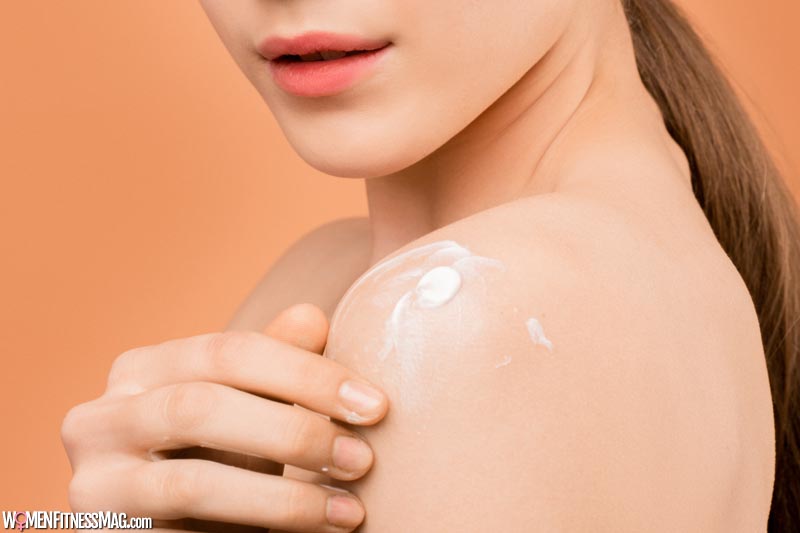The Science Behind Skin Care For Sensitive Skin : Our skins are fighting a battle every day. Whether it’s to protect us from UV rays, free radicals, or something else entirely, skin cells are giving it all they’ve got to keep us safe.
However, it’s in our best interest to provide assistance in the form of skin care products, and this especially applies to those readers with sensitive skin. Instead of simply trusting the ads, reviews, and tips from friends, though, it can be beneficial (or just plain interesting) to be aware of the science behind these products. Why exactly are useful products useful and, conversely, why are some products not the best choice for sensitive skin? Science has answers.
Dermatology 101
Before we look into the specific types of skin care products, we should first become acquainted with the more general skin science that will help us understand how these products work.
While skin is comprised of three major layers, the one we’re interested in is the outermost layer named epidermis. Like other layers, the epidermis is also comprised of millions of skin cells. However, the top 15-20 layers of the epidermis (called stratum corneum) which are closest to the surface, are comprised of dead skin cells.
In a process called cell turnover, enzymes break down layers of the stratum corneum, making room for younger skin cells to take the place of the dead and departed ones. However, if the water content in skin cells is low, enzymes cannot do their job properly. This results in scaly and flaky skin.
This is precisely why moisturizers are used for skin care and why they should be an essential part of your skin care routine, especially if your skin is sensitive.
Moisturizers

It’s interesting that moisturizers don’t really add moisture to the skin. Surrounding the outermost cells are fatty lipids, whose function is to repel water. If they didn’t do their job, we would swell (or burst!) upon a more substantial contact with water.
Unfortunately, fatty lipids also prevent any skin product from being able to moisturize the skin. So, despite their name, moisturizers actually help us by preventing water from ever leaving the skin in the first place.
We can divide the ingredients used in moisturizers into three categories: humectants, emollients, and occlusives. While most moisturizers use a combination of all three categories, they differ in the used ratio.
Humectants
Humectants, such as glycerin and hyaluronic acid, can be compared to sponges. They function by attracting water from the atmosphere and from beneath the epidermis, supplying it to the stratum corneum.
Because of their sponge-like quality, humectants are a good solution for people with oily skin.
Emollients
Emollients are actually unsaturated fatty acids. Such acids are prone to oxidizing, which means that the oil found in emollients will break down in the process of oxidation. The result is inflammation, acne, and clogged pores.
This makes emollients less than ideal ingredients to use. However, emollients such as calendula oil or jojoba oil do make the skin smoother.
Occlusives
Finally, occlusives, such as beeswax and petroleum jelly, are useful because they form a barrier on the surface of the skin which will resist water.
While they are thick and greasy, studies have shown there’s no need to worry about occlusives clogging the pores, even if your skin is sensitive.
Desmolytics

Chemical exfoliates, or desmolytics as they are scientifically called, are used to speed up the process of cell turnover, wherein younger skin cells take the place of dead ones. Older people are especially likely to have a problem with slow cell turnover.
Apart from helping with flaky skin (the result of inadequate turnover), desmolytics can also treat acne and hyperpigmentation. The latter is a condition characterized by skin becoming darker due to old age or damage caused by sun rays.
Types of Desmolytics
Desmolytics can be either Alpha Hydroxy Acids (AHAs) or Beta Hydroxy Acids (BHAs). People with sensitive skin should avoid products containing glycolic acid. This is the smallest commonly used AHA. Thanks to its size, it reaches deeper into the skin, which can cause irritation. Therefore, seek out the products containing larger AHAs, such as lactic acid or mandelic acid.
And, for an even milder and weaker solution, look for products containing BHAs such as salicylic acid.
Sunscreen Products
Last but not least, no matter which products you’re using, it’s always a good idea to combine them with a broad-spectrum sunscreen. Such sunscreens protect our skin by blocking Ultraviolet A (UVA) and Ultraviolet B (UBA) light rays.
Of the two, UVA rays’ wavelength is longer, which means they reach deeper into the skin, forming signs of aging. UBA rays’ wavelength is shorter, and they only penetrate the surface of the skin and cause sunburn. However, exposure to both types of ultraviolet rays can lead to cancer.
Sunscreens use organic molecules, such as avobenzone, to absorb ultraviolet rays. Therefore, in order to stay protected, it is advisable to wear sunscreen at all times, even when it isn’t sunny! While there are sunscreen products designed to fit easily into everyday beauty routines, applying sunscreen at all times is a drag. But, like with everything else in life, the easiest road to take is not the most advantageous one.
Related Videos about The Science Behind Skin Care For Sensitive Skin :
The Science Behind Skin Care For Sensitive Skin
dermatologist-recommended skin care products for sensitive skin, skincare routine for sensitive skin, korean skincare for sensitive skin, best skin care products for sensitive skin, skin care products for sensitive skin philippines, best natural skin care products for sensitive skin, best skincare products for sensitive dry skin, best skincare for sensitive skin 2021,










